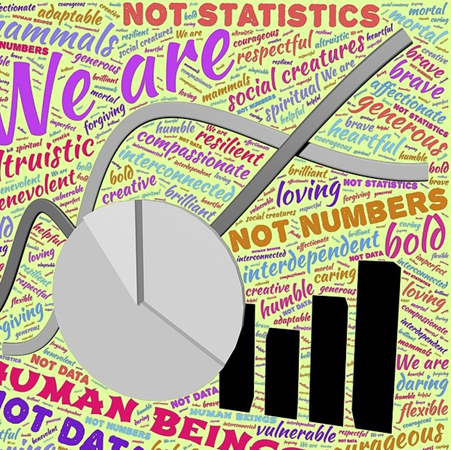Welcome to another in our series of Stewardship as Community Care posts. In our March 26th blog, we discussed budgeting in uncertain times. Today we complement that subject by exploring congregations’ fiscal year (FY) 2020 pledge fulfillment and expectations for the annual pledge drive for FY 21.

July 1, 2020 marks the beginning of the fiscal year 2021 for many congregations, and the half-way point of FY 2020 for others. Either way, it is a benchmark point in pledge fulfillment. How well are we doing? Recent conversations with several congregations point to their flexibility and caution in this time of human and economic crisis:
“We’re doing okay; our pledge drive has done surprisingly well, especially given the circumstances. We’re at 92% of our financial goal for next year, and we’re keeping pace with the total pledged last year, but we may not be able to keep last year’s pace from April.”
“We are all busy and under pressure. Stewardship can’t run this pledge drive all alone. Our energy is best spent communicating and problem solving with all our church family working together…”
“Our FY 20 pledges are at 75% through March which is right on target. However, we do anticipate a shortfall given the current Covid-19 situation. We’ve had several folks indicate they will have to hold back and there are likely others. I’m expecting about 92%-95% pledge fulfillment. We’re planning for a lower budget total next year as well.”
“It looks like most people are fulfilling their 2020 pledges, but when they’ve confirmed this year’s pledge, there are some people reporting they will be lowering their pledges next year. We’re listening, paying attention to who is having problems.”
“In terms of our pledge drive, we were fortunate to launch our drive prior to the current disruption, with our main pledge event held on Sunday, March 1. We have found historically that declining pledges or dropped pledges cost us about $50,000 or close to 10% of our pledge total each year, so new and increased pledges have to make that up plus any increased need due to inflation. Of course, in the current environment, the declines/drops might be more substantial…”
In each of these and many more congregations, stewardship and board leadership are doing their best to deeply understand stewardship as caring and outreach to foster generosity and keep their congregations resilient in difficult times.
What is surfacing as congregations adapt their stewardship programs to these times?
- When it comes to pledging, asking for pledge commitments takes a backseat to connecting and caring. There has been an acute period identified – about mid-March at least into May – when many stewardship teams are making stewardship calls that are serving as pastoral care . Stewardship canvassing is in fact ideally set up to support individuals and groups because it emphasizes listening skills and attentiveness. In these times we must focus on caring for each other and recognize that many have been deeply affected by the pandemic and the economic crisis. Stewardship canvassers can reach out with love and help congregants understand that while some cannot give as much, others who are not as harshly affected, will and are stepping up their commitments. It is important to recognize there is no minimum pledge, every gift is vital to the lives of our congregations.
- Congregations are considering ways to change up the pledging and payment cycles that normally define the annual pledge campaign so people have different ways of planning and budgeting their own pledges.
- Some are focusing on ramping up their Monthly Sustainer messaging. With congregational online giving far more robust than ever before, congregations can focus on a major drive to move people to the monthly sustainer program. Whether by credit or debit card or by electronic fund transfer, regularizing giving – even if some individuals are more cautious and their gifts are at lower levels than they have been – will help congregations by providing steady monthly income.
- Some are asking for large early pledges. Like with capital campaigns, a congregation can set up ‘early giving pledge campaigns’ for those members capable of making significant gifts even in times of widespread economic hardship. You can use a portion of this committed early money for matching gift incentives to maintain giving levels or to encourage 100% participation.
- In some congregations, especially hard hit by the virus, they are skipping the Annual Pledge drive in favor of an all-congregation call to maintain current giving levels into the next fiscal year, unless there are personal circumstances making it impossible to do so.
Regardless of what methods you choose, we need to care for each other, work together, and stay in covenant with one another at this time. Annual stewardship drives and pledge commitments are among the many ways we support our congregations, our Unitarian Universalist values, and the world.

Over a 25-year career in resource development, Liz has led fundraising efforts including major gifts campaigns for Prosperity Now, Center for Community Change, Ms. Foundation for Women, and Legal Momentum (formerly NOW Legal Defense Fund). Liz has been a member of All Souls Unitarian Universalist Church in Washington, DC since 2003. Reach Liz at Team@StewardshipForUs.com

“It is important to recognize there is no minimum pledge, every gift is vital to the lives of our congregations.”
This is not actually true in my society, we do have a minimum pledge (recently increased, well before the current situation, of course). Of course, we accept any and all donations gratefully, but for membership, there is a minimum (waiveable on request to the minister or board president). There were discussions some years ago about eliminating that, but no movement yet; in fact, as mentioned, we went in the opposite direction last year, and increased it.